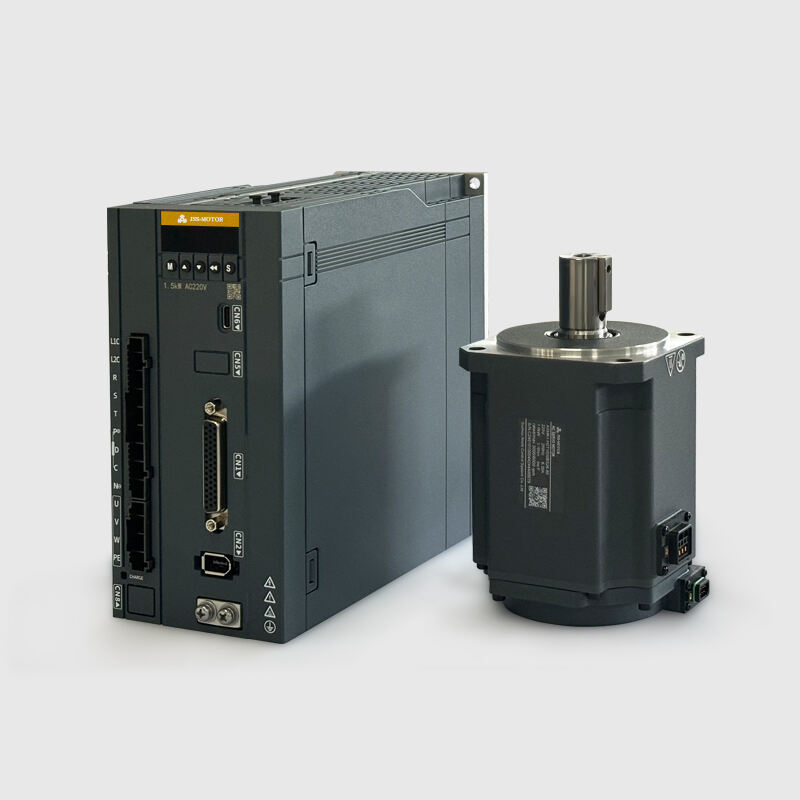Understanding the Fundamentals of Modern Motion Control Systems
In the evolving landscape of industrial automation, ac servo motors have emerged as the cornerstone of precise motion control. These sophisticated devices combine advanced electromagnetic principles with cutting-edge control technology to deliver unparalleled accuracy and dynamic performance. As manufacturing processes become increasingly demanding, the selection of the right ac servo motor becomes crucial for achieving optimal system performance and operational efficiency.
The modern ac servo motor represents a significant leap forward from traditional motor technologies. By incorporating feedback mechanisms and sophisticated control algorithms, these motors can maintain exact positions, velocities, and torque outputs. This level of precision makes them indispensable in applications ranging from CNC machinery to packaging equipment and robotic systems.
Essential Performance Characteristics of AC Servo Motors
Torque and Speed Specifications
The primary consideration in ac servo motor selection revolves around torque capabilities. Continuous torque determines the motor's sustained operation capacity, while peak torque indicates its ability to handle momentary overload conditions. Understanding the load requirements throughout the entire operating cycle is essential for proper sizing. A motor must deliver sufficient torque at both low and high speeds to maintain system performance.
Speed characteristics play an equally vital role in motor selection. The relationship between speed and torque, often represented by the speed-torque curve, helps determine whether a particular ac servo motor can maintain the required performance across its operating range. Maximum speed ratings, acceleration capabilities, and speed regulation accuracy must align with application demands.
Precision and Resolution Factors
Position accuracy and resolution capabilities define the motor's ability to achieve and maintain precise movements. The encoder system integrated into an ac servo motor provides position feedback, with resolution typically measured in pulses per revolution. Higher resolution enables finer position control but must be balanced against system requirements and cost considerations.
Dynamic response characteristics, including settling time and overshoot behavior, influence the motor's ability to execute rapid position changes accurately. These parameters become particularly critical in applications requiring quick direction changes or precise positioning at high speeds.
Mechanical and Environmental Considerations
Physical Integration Requirements
The mechanical aspects of ac servo motor selection extend beyond basic mounting configurations. Factors such as shaft type, bearing specifications, and coupling methods must align with the application's mechanical interface requirements. The motor's physical dimensions and weight impact the overall system design, particularly in applications where space constraints or moving masses are critical considerations.
Thermal management plays a crucial role in motor performance and longevity. Heat dissipation capabilities, ambient temperature ratings, and cooling methods must be evaluated based on the operating environment and duty cycle. Proper thermal design ensures consistent performance and prevents premature component failure.
Environmental Protection Standards
Industrial environments often expose equipment to challenging conditions. The selection of an ac servo motor must consider the required protection level against dust, moisture, and other contaminants. IP ratings specify the degree of protection, with higher ratings necessary for harsh environments or washdown applications.
Vibration resistance and shock tolerance become significant factors in applications involving high dynamic forces or external mechanical disturbances. Motors must maintain accuracy and reliability despite these challenging conditions, making the mechanical robustness of the motor assembly a critical selection criterion.

Control System Integration and Communications
Drive Compatibility and Control Methods
The success of an ac servo motor implementation depends heavily on proper integration with its drive system. The motor and drive combination must support the required control modes, including position, velocity, and torque control. Communication protocols between the drive and higher-level controllers must align with the overall automation architecture.
Advanced features such as auto-tuning capabilities, regenerative options, and built-in protection functions enhance system performance and reliability. The control system's ability to optimize motor behavior through parameter adjustment and monitoring functions contributes significantly to achieving desired performance levels.
Network Integration and Industry 4.0 Readiness
Modern industrial applications increasingly demand connectivity and data exchange capabilities. The selected ac servo motor system should support relevant industrial networks and provide comprehensive diagnostic information. This connectivity enables remote monitoring, predictive maintenance, and integration with Industry 4.0 initiatives.
Data collection and analysis capabilities help optimize system performance and maintain long-term reliability. The ability to monitor parameters such as temperature, current draw, and position error in real-time provides valuable insights for system maintenance and performance optimization.
Frequently Asked Questions
What distinguishes an ac servo motor from standard AC motors?
An ac servo motor incorporates precise feedback control, typically through an encoder system, enabling exact position, speed, and torque control. Unlike standard AC motors, servo motors can maintain specific positions and provide highly dynamic performance with rapid acceleration and deceleration capabilities. They also offer superior efficiency and response times in variable-speed applications.
How do I determine the correct size ac servo motor for my application?
Proper sizing involves analyzing several factors including required torque throughout the motion profile, speed requirements, inertia matching considerations, and duty cycle. Calculate both continuous and peak torque needs, consider acceleration requirements, and evaluate the load inertia ratio. It's recommended to include a safety margin of 20-30% in calculations to ensure reliable operation.
What maintenance requirements should be considered for ac servo motors?
While ac servo motors generally require minimal maintenance, regular inspection of bearings, encoder systems, and cooling mechanisms is important. Monitor parameters such as vibration levels, temperature, and position error to detect potential issues early. Ensure proper environmental protection and cooling are maintained, and follow manufacturer-recommended maintenance schedules for optimal performance and longevity.

